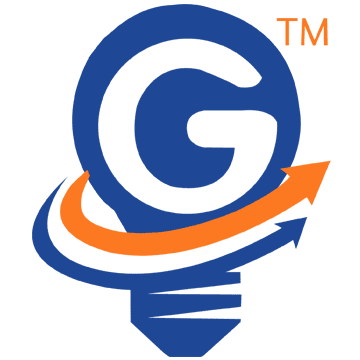In the intricate world of Search Engine Optimization (SEO), where algorithms constantly evolve and digital landscapes shift, Technical SEO stands out as a critical component that often determines a website’s success in search engine rankings. This blog aims to demystify Technical SEO by taking a deep dive into the code, unraveling the complexities, and shedding light on the key practices that can optimize your website for search engines.
Table of Contents:
1. The Foundation: Understanding Technical SEO
2. The Code Anatomy: HTML Tags and Structured Data
3. Site Speed Optimization: A Need for Speed in SEO
4. Mobile Optimization: A Mobile-First Approach
5. Crawling and Indexing: Guiding Search Engine Bots
6. URL Structure and Canonicalization: The Art of Organization
7. HTTPS and Security: A Ranking Signal
8. Technical SEO Audits: Assessing and Improving Performance
1. The Foundation: Understanding Technical SEO
Technical SEO involves the optimization of your website’s infrastructure and coding elements to enhance its crawlability, indexability, and overall performance in search engine results. At its core, Technical SEO ensures that search engine bots can efficiently navigate and understand your website’s content, leading to improved visibility.
2. The Code Anatomy: HTML Tags and Structured Data
HTML tags form the backbone of a webpage, and optimizing them is crucial for Technical SEO. This section explores the significance of title tags, meta descriptions, header tags, and other HTML elements.
a: Title tag: The title tag is essential for search engine optimization (SEO) as it provides a concise and relevant title for the page.
b: Meta Description: Meta descriptions offer a brief summary of the content, influencing click-through rates.
c: Header Tags: Header tags (H1, H2, etc.) structure content hierarchically, aiding both search engines and readers in understanding the page’s organization. They contribute to SEO by highlighting key topics.
Other HTML elements, such as alt attributes for images, also play a role in SEO by providing context.
Overall, optimizing these elements enhances a website’s visibility, user experience, and search engine ranking.
Additionally, it delves into the implementation of structured data, providing search engines with context and enhancing the presentation of information in search results.

3. Site Speed Optimization: A Need for Speed in SEO
Site speed is a crucial factor in both user experience and search engine rankings. Slow-loading websites can lead to higher bounce rates and lower rankings. The blog explores techniques for optimizing site speed, including image compression, minification of code, and leveraging content delivery networks (CDNs) to ensure swift loading times.
Image Compression: Compressing images reduces file sizes without sacrificing quality. Tools like TinyPNG or ImageOptim can help maintain visual appeal while enhancing load times.
Code Minification: Minifying HTML, CSS, and JavaScript files by removing unnecessary characters and spaces reduces file sizes. This leads to faster loading times as browsers can process the code more efficiently.
Content Delivery Networks (CDNs): CDNs distribute your website’s static content across multiple servers worldwide. This reduces the physical distance between the user and the server, resulting in quicker loading times. Popular CDNs include Cloudflare, Akamai, and Amazon CloudFront.
Browser Caching: Enable caching to store static files in visitors’ browsers. This allows subsequent visits to your site to load faster as the browser retrieves stored files instead of downloading them again.
Lazy Loading: Implement lazy loading for images and videos. This defers the loading of non-essential content until the user scrolls down, reducing the initial load time.
Optimize CSS and JavaScript: Eliminate unnecessary code, combine files, and load them asynchronously to prevent blocking. Tools like UglifyJS or Terser can assist in optimizing JavaScript.
Reduce Server Response Time: Optimize server performance by addressing issues like database queries, server load, and efficient coding practices.
| Importance of Site Speed: | Site speed refers to the time it takes for a web page to load fully. It directly influences user experience, as slow-loading websites can lead to higher bounce rates, decreased user satisfaction, and potential loss of conversions. |
|---|---|
| Image Optimization: | Images are often the largest elements on a webpage and can significantly impact loading times. Optimizing images involves compressing them without compromising quality. |
| Content Delivery Networks (CDNs) | CDNs are networks of servers distributed globally, designed to deliver web content to users from the server geographically closest to them. |
| Browser Caching: | Browser caching involves storing static files (such as images, CSS, and JavaScript) on a user's device after the initial visit. |
| Mobile Optimization: | With the prevalence of mobile device usage, mobile optimization is integral to site speed. Responsive design ensures that websites adapt to various screen sizes, and mobile-specific optimizations, such as smaller images and streamlined content, contribute to faster loading on mobile devices. |
4. Mobile Optimization: A Mobile-First Approach:
Mobile optimization, specifically adopting a mobile-first approach in technical SEO, is imperative in the contemporary digital landscape. This strategy involves designing and optimizing websites with the primary focus on mobile devices before considering desktop versions. With the majority of internet users accessing content through smartphones, search engines prioritize mobile-friendly websites in their rankings. To demystify the technical aspects, it requires responsive web design, efficient coding practices, and optimizing images for various screen sizes. Ensuring that the site loads quickly on mobile devices, leveraging mobile-friendly navigation, and utilizing structured data for mobile content enhances both user experience and search engine visibility. In essence, mobile-first optimization is not just a trend; it is a fundamental shift in SEO strategy to align with the evolving preferences and behaviors of online users.
5. Crawling and Indexing: Guiding Search Engine Bots :
Crawling and indexing are pivotal components in the technical SEO landscape, and demystifying their intricacies is essential for effective online visibility. Search engine bots continuously crawl the web, navigating through pages to discover and index content. In this process, technical SEO practitioners guide these bots by implementing practices that enhance discoverability. This involves creating a well-structured sitemap, employing robots.txt files to direct bots on which pages to crawl or avoid, and ensuring a logical website architecture.Utilizing canonical tags helps prevent duplicate content issues, while optimizing crawl budget ensures that search engine bots focus on indexing the most relevant pages efficiently. By mastering the nuances of crawling and indexing, businesses can ensure that their web content is not only discovered promptly but also effectively prioritized by search engines, ultimately boosting their online presence.
6. URL Structure and Canonicalization: The Art of Organization:

A well-organized URL structure not only contributes to a positive user experience but also aids search engines in understanding the hierarchy of your content. Canonicalization, which involves specifying the preferred version of a URL, helps prevent duplicate content issues.
7. HTTPS and Security: A Ranking Signal:
Security is a growing concern, and search engines prioritize secure websites. The blog explains the importance of migrating to HTTPS, the secure version of the HTTP protocol, and the positive impact it has on search engine rankings. It also touches upon the role of SSL certificates in establishing trust with users and search engines.
In the realm of technical SEO, the adoption of HTTPS and its role as a ranking signal has become a critical aspect of website optimization. HTTPS, which encrypts data exchanged between a user’s browser and a website, not only safeguards user information but also influences search engine rankings. Search engines, including Google, consider secure websites more favorably in their algorithms. This preference for HTTPS is part of an ongoing effort to prioritize user security and privacy. By obtaining an SSL certificate and migrating to HTTPS, websites signal to both users and search engines that they prioritize data integrity. This security measure not only contributes to improved search engine rankings but also establishes trust with visitors, fostering a more secure and reliable online environment. In essence, the adoption of HTTPS transcends a mere security protocol; it has become an integral part of technical SEO strategy for enhancing both user experience and search engine visibility.
8. Technical SEO Audits: Assessing and Improving Performance :
In the intricate landscape of technical SEO, conducting regular audits is a fundamental practice for assessing and enhancing website performance. A technical SEO audit involves a comprehensive examination of a website’s backend elements, focusing on factors like crawlability, indexation, site speed, and mobile responsiveness. By demystifying the complexities within the website’s technical infrastructure, practitioners can identify issues such as broken links, duplicate content, or inefficient coding that may hinder search engine visibility. These audits serve as diagnostic tools, pinpointing areas for improvement to align with search engine algorithms and best practices. Through careful analysis and subsequent optimization, businesses can ensure that their websites are not only technically sound but also well-positioned to thrive in search engine rankings, ultimately maximizing online visibility and user experience.
In essence, “Technical SEO Demystified: A Deep Dive into the Code” equips readers with a thorough understanding of the technical intricacies that underpin effective SEO practices. By unraveling the complexities of the code, businesses and website owners can implement actionable strategies to enhance their website’s performance, visibility, and ultimately, their success in the digital landscape.

